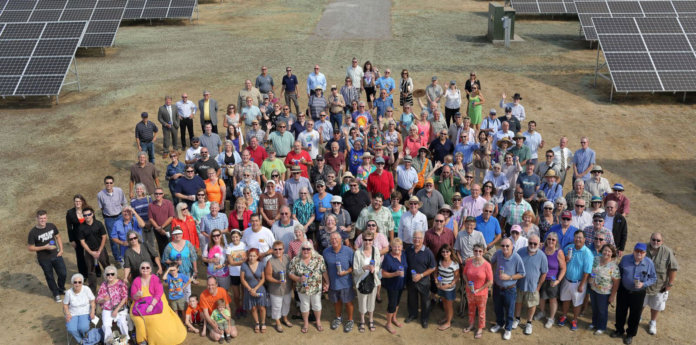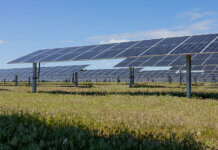Clark Public Utilities, a customer-owned public utility serving roughly 200,000 customers in Clark County, Wash., says its community solar site has hit a new record for energy production. In turn, participants in the community solar program will see increased savings.
The utility’s community solar site consists of five separately metered, adjacent projects that, in total, form a 319 kW system capable of producing enough energy to power 30 homes annually. During the 2019 “solar year,” the system produced 385,549 kWh of electricity, representing 11,675 kWh more than it did in 2018, which was the system’s most productive year since it came online in 2015. Production is metered though a solar year that begins July 1 and ends June 30.
“The community solar photovoltaic arrays produced more electricity during the 2019 solar year than any other year since they were installed four years ago,” comments Matt Babbitts, energy services project manager at Clark Public Utilities. “As a result, our customers who have purchased community solar units will receive nearly a dollar per unit more this year than they did in 2018.”
The installation was built on utility property located at the corner of Padden Pkwy. and N.E. 117th Ave. at a site chosen for its prime solar exposure, community visibility and cost-effective proximity to local electrical infrastructure, the utility says.
The array was financed through sales of community solar units equal to about one-twelfth of a panel. More than 700 utility customers are participants at levels ranging from the purchase of one unit up to 100. Participants receive an annual bill credit for their portion of the energy produced, similar to the utility’s rooftop solar net metering program. They also receive a Washington State Production Incentive specifically for community solar through the year 2020.
Although the state incentive ends next year, community solar participants will continue to receive the utility’s annual energy credit for the estimated 20-year life of the system.
According to the utility, the project was popular from the start: Units of the first solar array sold out on the first day, and the other four arrays were built due to high demand and sold out in less than a month. On average, each customer owns 10 units of the system. New units cannot be created but can be transferred or sold by current owners if those participants move out of the utility’s service area.




